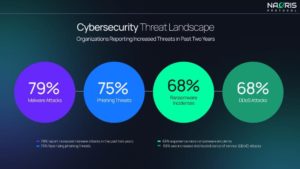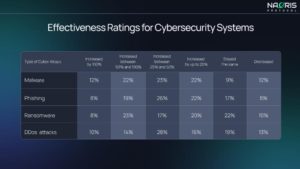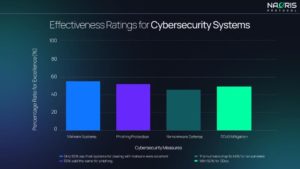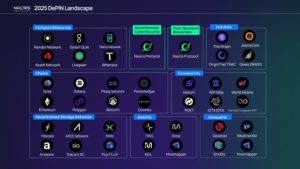Study Reveals Malware And Phishing Leading Critical Infrastructure Threats As Cyber Attacks Rise
As cyber criminals unleash increasingly sophisticated attacks, IT Directors from the world’s leading companies are battling an unprecedented wave of digital threats; from Ransomware to Phishing and future Quantum Computing risks.
RELATED: Kenya – AI, data privacy and cybersecurity regulation lead IT sector growth drive in 2025
Nearly half of IT directors at global enterprises predict cybercrime costs will exceed $15 trillion by 2030 – equivalent to the combined GDP of Germany, Japan, and the United Kingdom with 9% predicting it will hit $20 trillion. That compares with industry estimates** that the cost of cyber crime will be $10.5 trillion by 2025, according to new research* from post-quantum decentralized security pioneer Naoris Protocol.
Key Research Findings
The global study, conducted with IT directors at companies with minimum $300 million revenue across the US, UK, EU and APAC, reveals:
Increases In Cyber Attacks Over Last 2 years
- Four out of five (79%) report increased malware attacks in the past two years
- With 75% seeing more phishing attacks.
- Just over two-thirds (68%) have seen increased ransomware attacks
- The same number (68%) reports increased distributed denial of service (DDos) attacks.

The table below also shows the rising number of cyber attacks reported by IT directors at major companies over the past two years.

Critical Infrastructure Vulnerabilities
Recent attacks highlight the growing sophistication of threats. T-Mobile’s 2024 breach exposed millions of U.S. customers in a massive China-linked hack that infiltrated over 100 major telecom networks globally, showing how vulnerable critical infrastructure remains despite enhanced security. Meanwhile, the MOVEit Transfer breach impacted over 2,000 organizations, demonstrating how technical gaps can paralyze critical operations. “Minor technical gaps now cause major operational disruptions,” warns Sarah Chen, CISO at a Fortune 500 manufacturer, citing a supply chain attack that halted production for 72 hours.
Key Findings On Enterprise Cybersecurity Effectiveness
This finding reflects how highly IT directors rate their systems for dealing with cyber risks
- Only 55% say their systems for dealing with malware were excellent
- 53% said the same for phishing.
- The numbers drop to 45% for ransomware
- With 50% for DDos.

“We’re seeing cyber attacks evolve at an alarming rate across most critical areas of the economy,” warns David Carvalho, CEO & Founder at Naoris Protocol. “What’s truly concerning is not just the frequency of attacks, but their increasing sophistication and use of new technologies, like AI. Traditional security walls haven’t been enough for a long time and are obviously no longer acceptable. A complete change in the architecture of systems and networks, their defense/compliance and validation approach is needed.”
Breaking Free from Traditional Security Models
The research reveals growing interest in Decentralized Physical Infrastructure Networks (DePIN) as a solution, with 64% of IT directors believing the addressable market will exceed $3 trillion by 2028, up from its current $2.2 trillion value.
DePIN technology decentralizes critical internet infrastructure like cloud, GPU, compute, connectivity, energy, storage, and data. Recent DePIN success stories like Helium’s decentralized wireless network and Render Network’s (distributed GPU rendering) show its versatility and growth potential. Helium developers have onboarded 1M+ hotspots, earning passive income while decentralizing IoT connectivity. For users this provides access to decentralized services, cost savings, and enhanced privacy, empowering users to control their data.
2025 Landscape of DePIN Leaders

Why Decentralization Matters for Modern Security
IT directors identify DePIN’s primary benefits as distributed data control, encrypted transit storage, and increased resilience. Decentralization enables the shift from isolated security models to community-driven computing representing a crucial evolution in cyber defense strategy. DePIN’s architecture spreads security across many independent nodes. If attackers compromise one area, the rest of the network continues operating smoothly. This approach means businesses can maintain critical operations even during targeted attacks.
Naoris Protocol’s recent joining of the DePIN Association marks a significant step positioning the company at the forefront of Decentralized CyberSecurity helping transform critical infrastructure across finance, telecommunications, and healthcare sectors.
The urgency for adopting new security architectures has never been clearer. As cyber threats continue to evolve, decentralized security solutions offer a robust framework for protecting critical infrastructure and maintaining operational resilience in an increasingly hostile digital landscape.































